Test bank for Managing Engineering and Technology 6th 0133485102
$38.00
This is a digital format book: Official Test bank is to accompany the Managing Engineering and Technology by
Lucy C. Morse, Daniel L. Babcock 6th edition textbook (check
editions by ISBN). Textbook is NOT included. Full test bank for the textbook. Test bank covers True | False questions, Short Answer questions, Multiple Choice and their answers. A must have to prepare your exams. Instant Download after purchase.
ISBN: 0133485102
ISBN-13: 9780133485103
- Description
- Reviews (0)
Description
You will receive this product immediate after placing the order
***THIS IS NOT THE ACTUAL BOOK. YOU ARE BUYING the Test Bank in e-version of the following book***
– The Test Bank is what most professors use an a reference when making exams for their students, which means there’s a very high chance that you will see a very similar, if not exact the exact, question in the test!
– The file is either in pdf, doc, rtf or zipped in the package and can easily be read on PCs and Macs.
– Delivery is INSTANT. You can download the files IMMEDIATELY once payment is done.
We also faced similar difficulities when we were students, and we understand how you feel.
But now, with the Test bank for Managing Engineering and Technology 6th 0133485102, you will be able to
* Anticipate the type of the questions that will appear in your exam.
* Reduces the hassle and stress of your student life.
* Improve your studying and also get a better grade!
* Get prepared for examination questions.
* Can save you time and help you understand the material.
This is the quality of service we are providing and we hope to be your helper.
Delivery is in the next moment. Test Bank is accurate.
If you have any questions, or would like a receive a sample chapter before your purchase, please contact us at inquiry@testbanksafe.com
Test Bank 1
Chapters 1-8
Short Answer
1. How would you distinguish between engineering management and management in
general?
A: Engineering management is the art of planning, organizing, leading, and
controlling activities that have a technological component. Management in general
could manage activities in all types of organizations. (p. 15)
2. Give an example of the Abilene Paradox, other than the ones given in class.
Write your example in paragraph form stating the Abilene Paradox and how your
example conforms to this paradigm. State this so that someone outside of class may
understand what we are talking about.
A: Abilene Paradox is the failing to manage agreement effectively. Answer depends
on the student and their experience. (p. 41)
3. What have we learned from classical management thinking? Give 3 items
A: Several answers are appropriate here including:
Scientific: Emphasizes proper selecting and training of workers and using standards.
Administrative: organized with a rigid hierarchy of authority and strict divisions of
labor.
Behavioral: Hierarchy of Human Needs; how they need to be addressed for effective
management.
4. What was a positive value of Max Weber’s model of “bureaucracy”?
A: Weber developed a model for a rational and efficient large organization. The
answer could include a number of points. (p. 37)
5. Comments have been made as to the positive and negative aspects of Frederick
Taylor’s teachings. Give 2 positive comments on the teachings and discuss.
A: His methods helped businesses increase their profits and increase the pay for
their employees.
With studying the motions, the work was optimized which yielded much greater
production and profit, this allowed better rates to be paid to employees, this helped
the employees and the willingness to work. (pp. 31-32)
6. A strategy is a statement about the way to achieve objectives. Why is it important to
have alternate strategies?
A: There are many ways to achieve a given objective. Also, while discussing
alternative strategies, one may be better than the originally proposed strategy. The
diversity in alternative strategies could lead to a more adaptable way of reaching the
initial objective.
2
7. What changes in an organization structure might you expect as a result of the
information revolution?
A: Answer depends on the student and their experience.
Flatter – The organizational structure will not have as many layers as previously
needed. The layers of management who were necessary to compile the number and
provide to upper management are no longer needed because much of that process
is automated.
Wider (geographically) – Because of the internet, video conferencing, low cost
teleconferencing, and email, a manager can now remotely manage an entire team of
people who may be on the other side of the globe. I have managed personnel from
Germany for two years. With the use of video conferencing, I felt as if we worked in
the same facility.
Fewer – The structure of the organization as a whole will be composed of fewer
personnel. This will be driven by the previous change (flatter) and also by the fact
that even fewer unskilled labors will be necessary as much of the prepping and
counting and menial tasks are completely automated, requiring fewer employees.
More technical – The employees who are employed need to have some familiarity
with computers, and many need to be very proficient.
8. Can multinational companies overcome the need for co-location of team members
when the teams must be created with people who come from greatly separated
geographical locations? If your answer is yes, how can they accomplish this? If your
answer is no, support your answer.
A: Answer depends on the student and their experience. Could include:
Initial face to face team meeting
Team should plan together
Team have meetings at alternating sites.
Team have ways to communicate regularly
9. Give a company’s mission that you found on the web.
A: Answer depends on the student and their experience
10.What is a difference in a Vision and a Mission for a company?
A: A vision is more of a long term goal whereas a mission is more immediate and
focused particularly on the business aspect.
11.Some companies require that employees who receive training at the company’s
expense enter into a contractual agreement to stay with the company a number of
years or repay the company if they leave. Is this unduly restrictive, or is it justifiable?
Why?
A: Answer depends on the student and their experience. One answer:
The company pays for schooling, which amounts to a large portion for most people,
but requires a number of months of employment from the last date of class that they
paid for. Why would a company want to invest money in an employee and then not
be sure that they reap the rewards of the invested money? The flip side of this
situation is that if companies do not require such an obligation after financing
3
training, an employee could take training at the company’s expense, and then use it
to improve their resume to apply for another job at another company. It really is just
a matter of a company protecting its investments.
12. What are four items to remember when putting your resume together?
A: There are many items including: resume not longer than two pages (for typical
age students – one page), correct grammar and spelling, well-organized, honest,
attractively printed, heading, work experience, education. (p. 119)
13. Do you think that engineering leaders of today are leaning more toward the servant
leadership? Why? 2 reasons.
A: Answer depends on the student and their experience. Servant leadership is a
practical philosophy which supports people who choose to serve first, and
then lead as a way of expanding service to individuals and institutions. (p.148)
14. In considering leaders, name a leader and 3 of the qualities discussed that this
person has.
A: Answer depends on the student. Some qualities are: integrity, humanism, selfdiscipline, enthusiasm, ability to inspire. (p. 141)
15. Why is planning said to have “primacy” among the managerial functions?
A: Planning is the most important function of management since without it the other
functions have little meaning. (p. 50)
16. If as a manager of an engineering company you ask that engineers become more
familiar with financial reports, what would you tell them are the benefits? Give 3.
A: There are many benefits for engineers to become more familiar with financial
reports. (1) Engineers can make well-informed and wise decisions that can save a
company a lot of money if they were to read the financial reports. For example, an
engineer could choose a product/resource that is cheaper in price if he were to
know that the company has a tight budget, and thus not hugely affect company
profits. (2) Engineers can be major contributors to bidding for future work if they
read the financial reports. For example, when a company’s financial
representatives input financial information to bidding proposals, they can consult the
engineers and ask them what type of resources are already in inventory, what will
be needed and at what price, estimated amount of hours on particular tasks and
much more. (3) Engineers can reap benefits on a personal benefit if they were to
read the financial reports. For example, engineers in a company are also
stockholders. They can decide how many stock shares they want to buy and sell
based on reading the company’s balance sheet and income statement. They can
control their company-provided 401K and employee stock purchase after reading
the results of the balance sheet and income statement.
Be the first to review “Test bank for Managing Engineering and Technology 6th 0133485102”
You must be logged in to post a review.


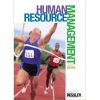
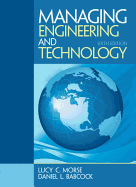

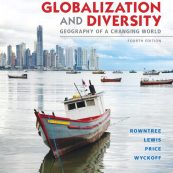
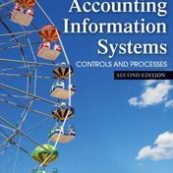
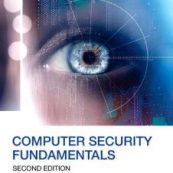

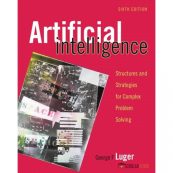
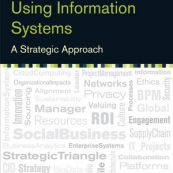

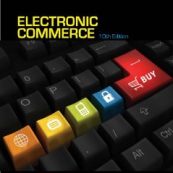

Reviews
There are no reviews yet.